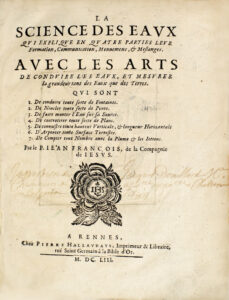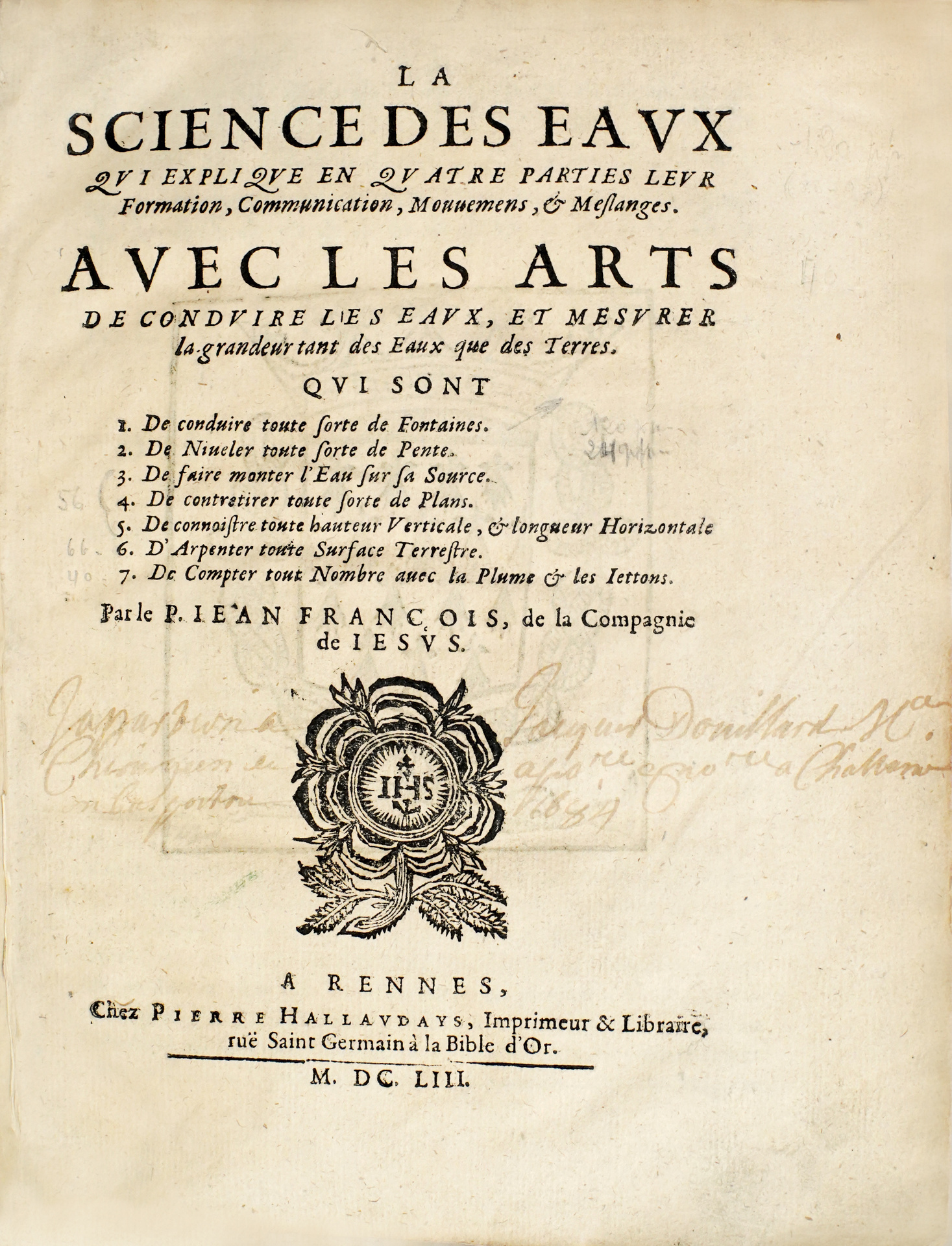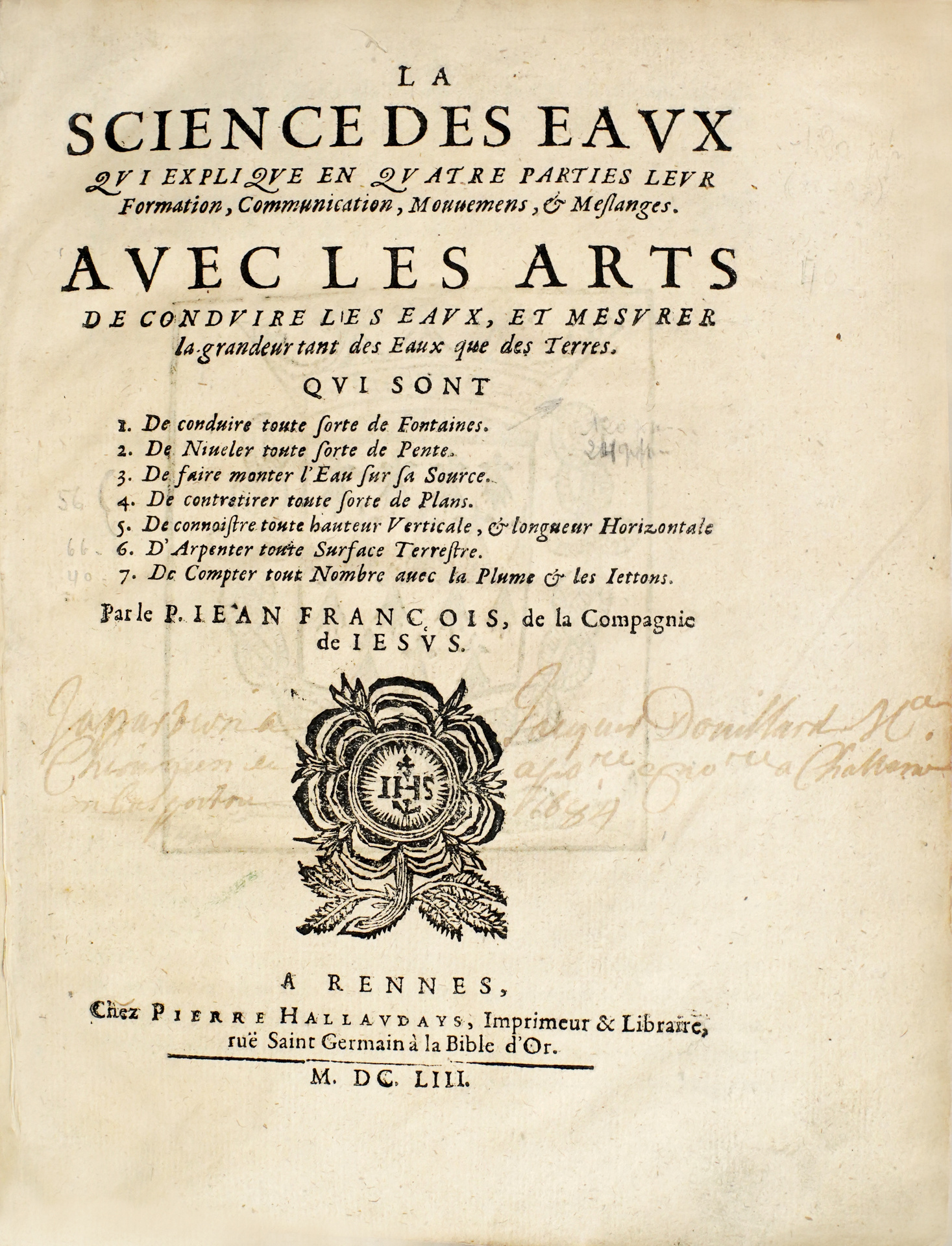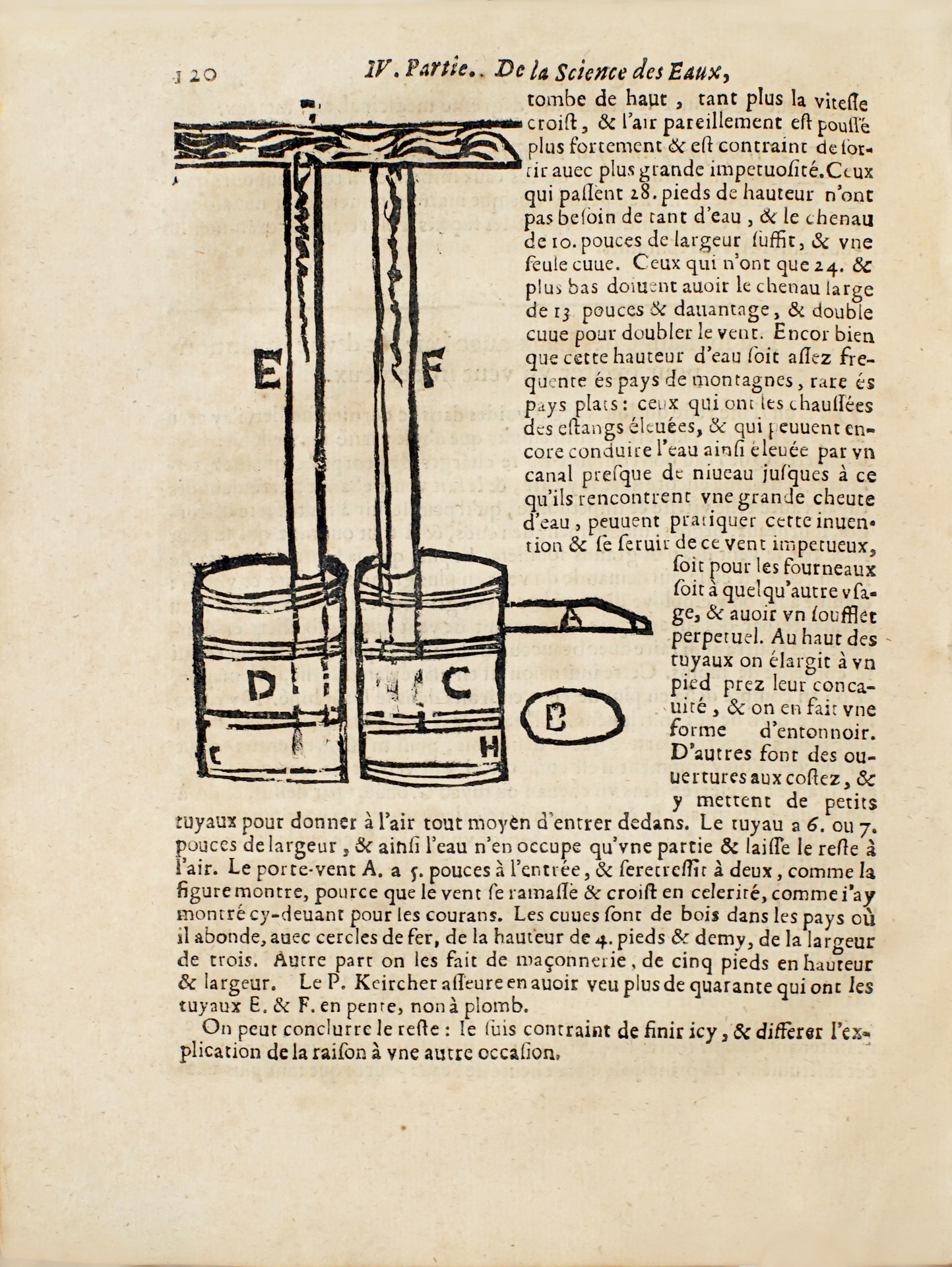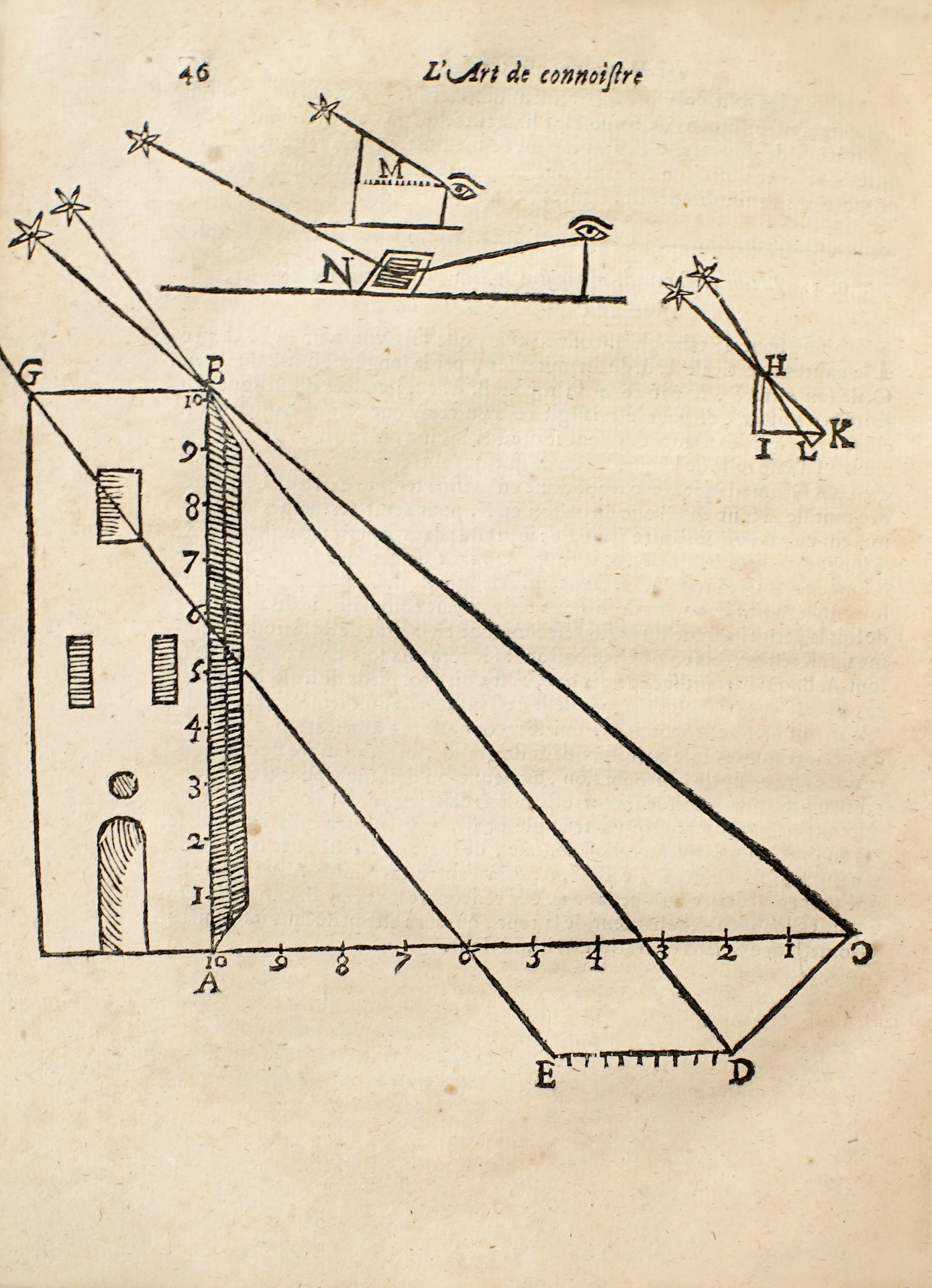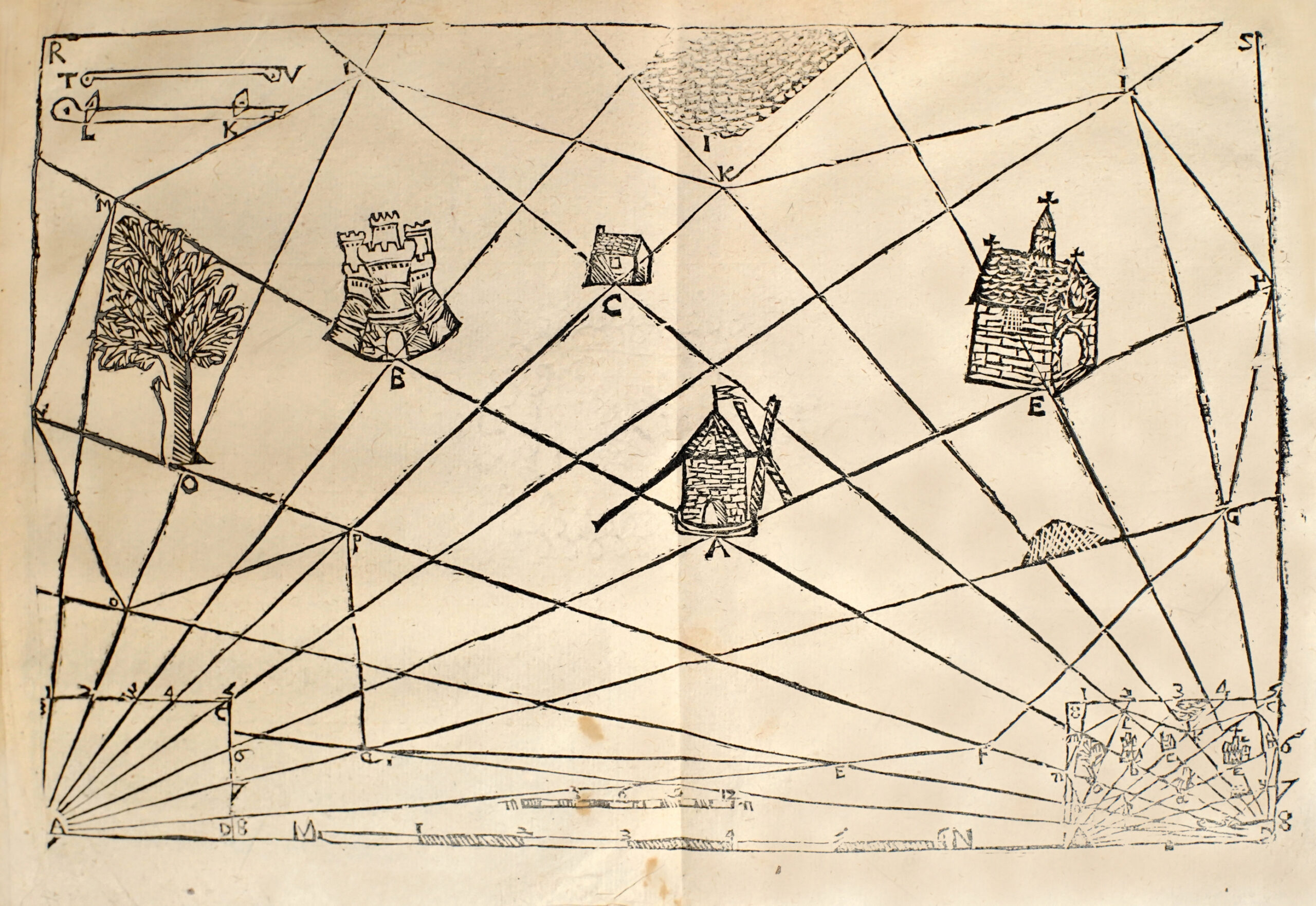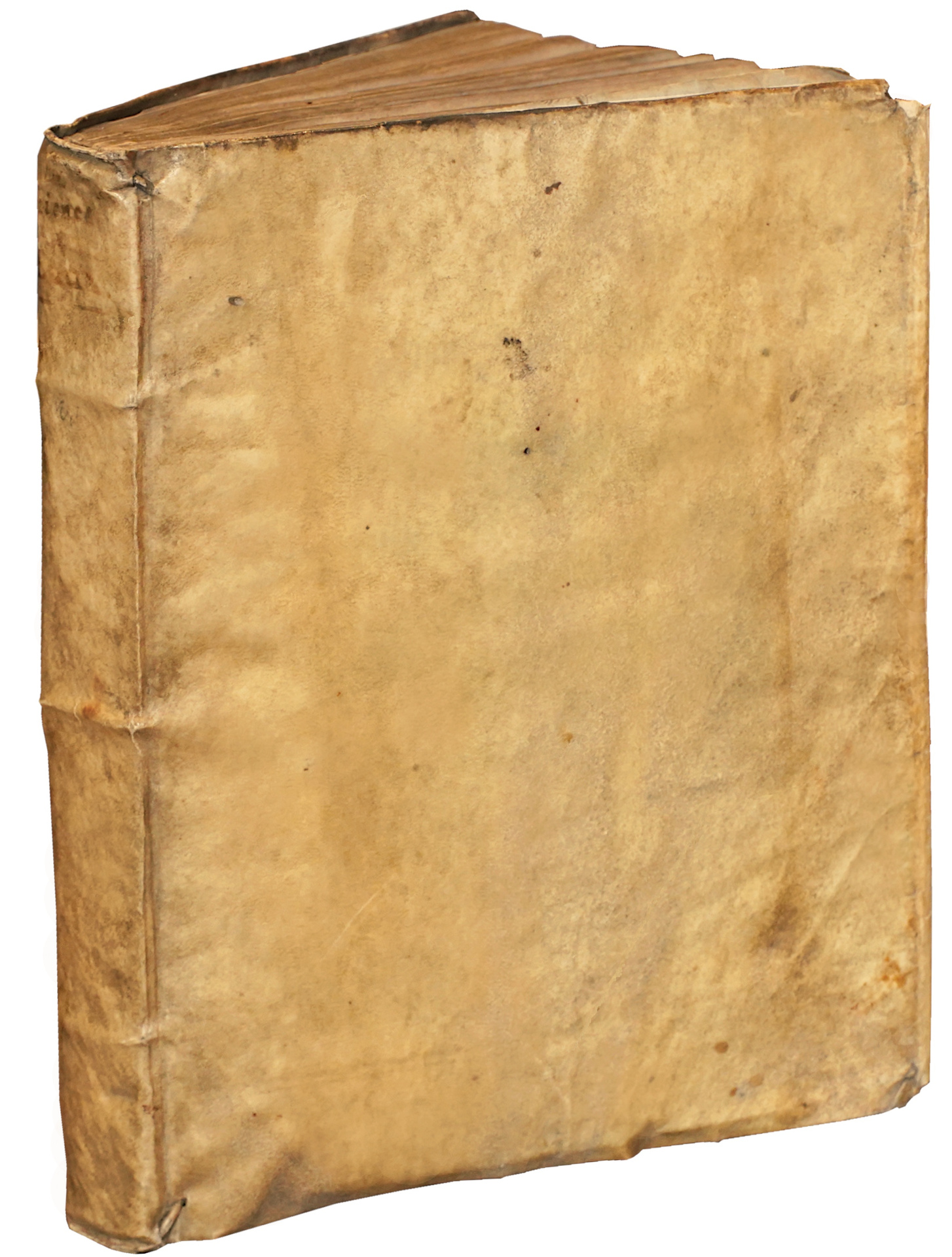6 parts in 1 volume 4to [206 x 155 mm] of (8) ll., 120 pp., 40 pp., 24 pp., 56 pp., 70 pp., 40 pp., 1 folding engraved plate, numerous woodcuts in the text, handwritten ex libris on the title. Contemporary limp vellum, flat spine. Contemporary binding.
Rare first edition on this important treatise on hydraulics written by Descartes’ teacher.
Graesse, Trésor de livres rares, 629 ; Brunet, II, 1379.
Jean François, (1582-1668), was a French Jesuit and mathematician. As he became a member of the Society of Jesus in 1605, he taught mathematics and philosophy at the college of la Flèche from 1613. François taught mathematics at the same time as he studied theology. He had René Descartes as a student, who retained a real attachment to him. Appointed prefect of studies in Nevers, Amiens and Alençon, he ended his career at the college of Rennes. The clarity of his lectures was generally emphasized.
“As we see, the author belongs to the Breton clergy: a Jesuit, he presents his book to ‘Our Lords of the States’. One may be surprised, at first sight, to hear a clergyman develop ex professo delicate questions which are directly related to the art of engineering; but, at all times of our history, hydraulics and geodesy have seduced several eminent minds among the ministers of the Church, and nowadays, have we not seen Abbé Paramelle perfecting the ‘Science des Eaux’ of Father François?
Biographical information on Father Jean François is almost non-existent. He was born in 1582 at Saint-Claude in Franche-Comté: he was therefore not a Breton, but we shall see that he became one in heart and almost in fact. He was admitted into the Society of Jesus in 1605 at the age of 23, and first taught philosophy and mathematics at the college of la fleche, where he had as a pupil in 1610 the illustrious René Descartes, who for the rest of his life retained the most tender attachment to his former teacher. He was then appointed prefect of studies and governed the colleges of Nevers, Amiens and Alençon. Finally, his superiors sent him, in 1650, to the college of Rennes, where he spent the last eighteen years of his life in peace.
During his entire life of service, he had taught, governed and preached. In Brittany alone this Eastern Breton felt in his country, and, as he met there a good printer, he let himself deliver his copies which had formed Descartes. From 1652 to 1668, the year of his death, he published successively eleven treatises on physics and exact sciences in Rennes; several of them were very successful and were reprinted several times in Paris.
The ‘Bibliothèque des écrivains de la Compagnie de Jésus’ by the PP. de Backer, cites in particular: 1. ‘La science de géographie’. Rennes, 1652. 2. ‘La science des eaux’. Rennes, 1653 and Paris, 1655. This is the work that will concern us…
The ‘Science des eaux’, independently of the art and management of waters and artificial fountains, which forms a separate treatise, consists of four chapters or parts, dealing with their formation, their communication, their particular movements and their combination.
Although Father François has clearly divided the science and art of waters, he nevertheless uses one and the other to expound his doctrines, and he does not admit that one can study the one without studying the other. At the beginning of the 17th century, when experimental physics was just beginning the immense progress it would make since then, they were very prudent and clearly laid down very judicious principles of study. As such, Father François does not launch into theoretical digressions that are too abstract or too absolute; when he has observed a fact, when he has examined it in all its various forms, when he has deduced all its consequences, he does not persist in wanting to give a complete explanation at all costs, if it escapes him; he does not want to be satisfied with approximations, and he prefers to nobly confess his ignorance and to refer to the author of the universe… We now know that we are not dealing with a dogged empirical, and we can have full confidence in the allegations and methods of an observer as conscientious” (L’Art de l’ingénieur et le clergé en Bretagne au commencement du XVIIe siècle).
« On trouve dans cet ouvrage des faits curieux et appuyés sur des expériences alors nouvelles » (De Backer, Bibliothèque des écrivains de la Compagnie de Jésus, IV, p. 243).
The work is illustrated with numerous woodcuts in the text as well as a folding plate.
Precious copy of this rare work written by Descartes’ teacher, preserved in its contemporary limp vellum binding.
Provenance : ex libris of Laurent de Lieutaud de Troisvilles, monogrammed stamp in green ink on a flyleaf, bearing the Latin motto Nunc nox mox lux (Now the night, and soon the light) of Ludovic Baschet art bookshop (Paris).
